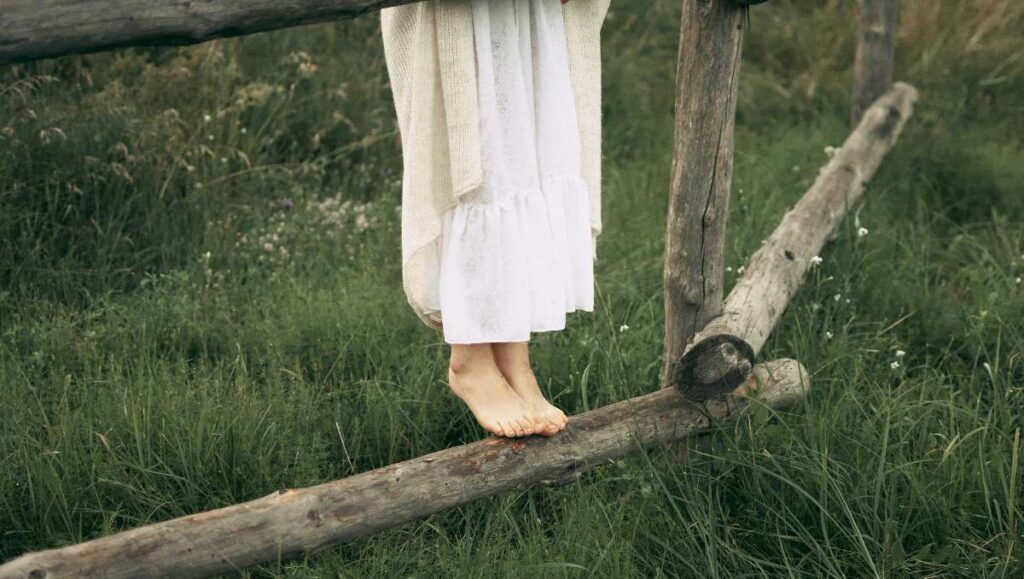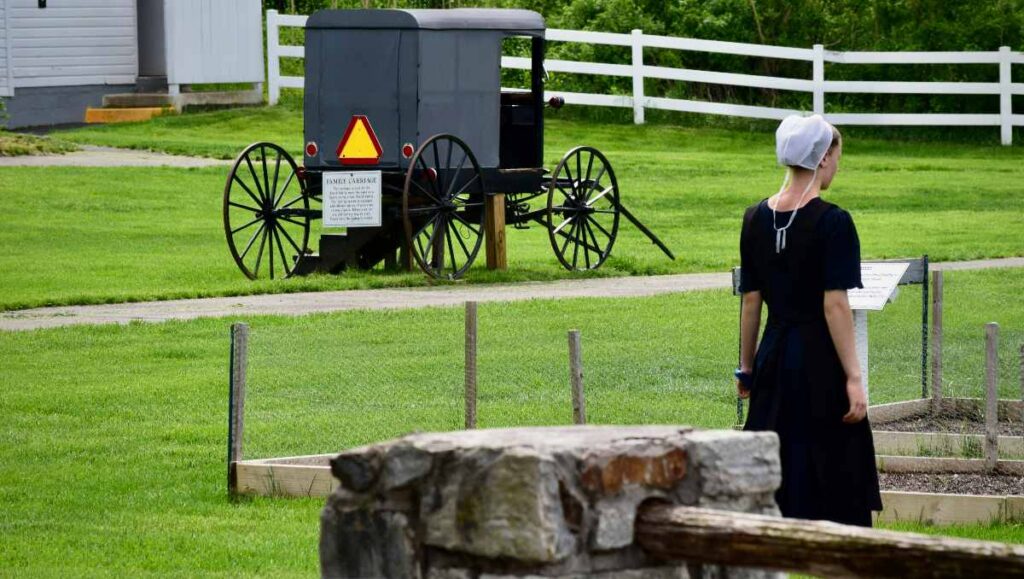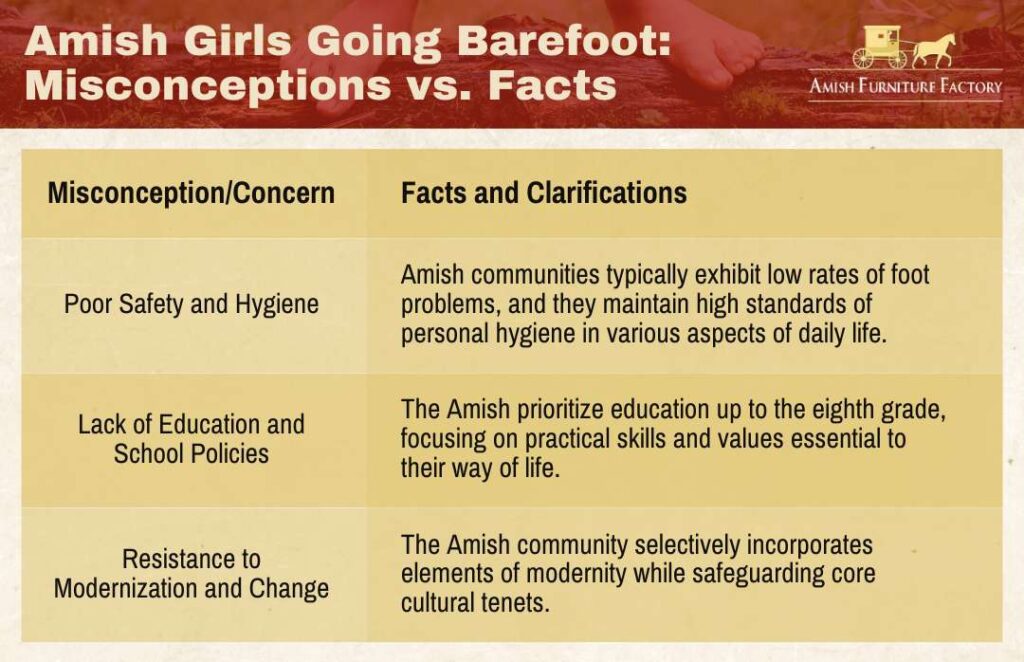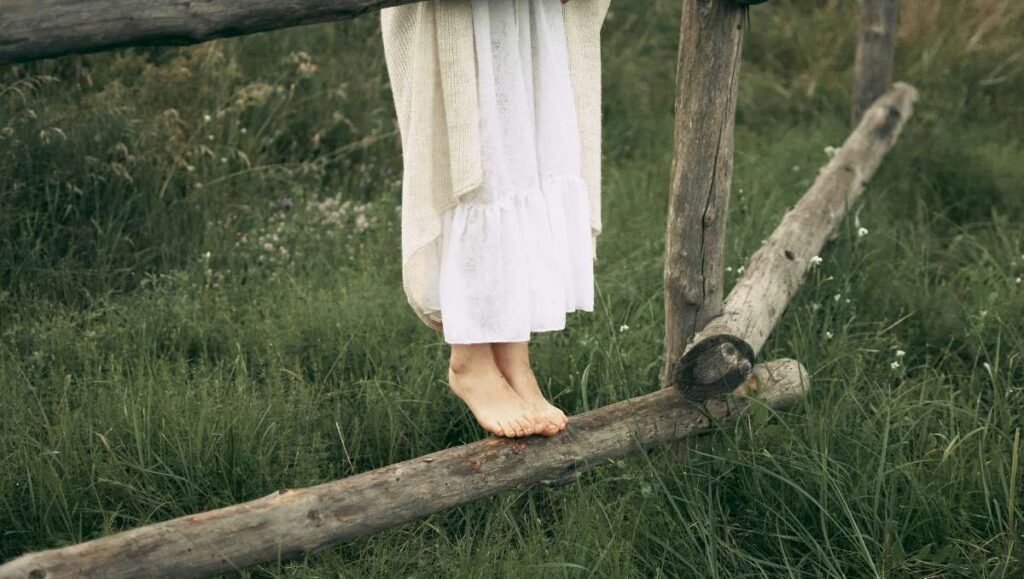
Do you ever wonder about the unique customs and traditions of different cultures? One intriguing aspect of Amish culture is the practice of Amish girls going barefoot. While this may seem unusual to outsiders, there are fascinating reasons behind this choice.
Amish girls go barefoot primarily due to cultural and religious beliefs that prioritize simplicity, humility, and a connection with nature. The Amish lifestyle, rooted in traditions dating back centuries, values modesty and rejects modern conveniences.
In this article, we will delve into the historical perspective on footwear in Amish culture, explore the reasons why Amish girls go barefoot, address common misconceptions and concerns, and examine how Amish footwear has evolved over time.
The Amish Community and Lifestyle
The Amish community, with their simple and traditional way of life, is as distinct as a lone daisy in a field of roses. Their lifestyle revolves around strong religious beliefs and a commitment to live separate from the modern world.
One aspect that sets the Amish apart is their education system. They prioritize education within their community and provide schooling up until eighth grade, focusing on practical skills that will help them in their traditional occupations.
Gender roles play an important role within the Amish community. Boys are typically taught skills such as farming and woodworking, while girls learn domestic tasks like cooking, sewing, and gardening. These gender-specific roles contribute to the self-sufficiency of the community.
Community support is another key aspect of Amish life. Neighbors come together to help each other with tasks such as raising barns or harvesting crops. This communal support fosters a sense of belonging and unity among members.
All these elements combined create a self-sufficient lifestyle for the Amish. By relying on their own skills and resources, they’re able to maintain their traditional way of life while also preserving their values and beliefs.

History and Evolution of Amish Girls’ Barefoot Customs
The sight of Amish girls walking barefoot often sparks curiosity and questions. This practice, while seeming unusual to many, is deeply rooted in the history and beliefs of the Amish community. Tracing its origins reveals a fascinating interplay of practicality, cultural identity, and religious interpretation.
Early in their formation, the Amish, seeking simplicity and self-sufficiency, prioritized handmade clothing and footwear. Shoes were reserved for special occasions or harsh weather, while daily life on the farm was navigated barefoot. This practice not only conserved resources but also offered practicality for chores and fostered a closer connection to the land.
Over time, religious significance became intertwined with the barefoot custom. The emphasis on humility and detachment from worldly possessions found resonance in going shoeless. Bare feet were seen as a symbol of modesty, adhering to interpretations of Biblical teachings on simplicity. Additionally, some Amish believe that being barefoot strengthens their connection to God through nature, fostering a sense of reverence for creation.
However, the practice of going barefoot has not remained static. Today, individual preferences and changing contexts play a role. While some communities maintain the traditional approach, others incorporate shoes more regularly, particularly for children or specific activities. This evolution reflects the dynamic nature of the Amish community, adapting to external influences while preserving core values.
The Reasons Why Amish Girls Go Barefoot
When it comes to understanding why Amish girls go barefoot, there are several practical reasons to consider. Firstly, going barefoot allows for greater mobility and agility, especially in agricultural and rural settings where heavy footwear can be a hindrance.

Practical Reasons
When it comes to Amish girls going barefoot, there are practical reasons behind this choice.
Cost and Durability
One practical reason behind Amish girls going barefoot is the emphasis on cost-effectiveness and durability. The Amish community places a high value on simplicity and frugality, avoiding unnecessary expenses whenever possible.
Footwear, especially sturdy shoes suitable for farm work or daily activities, can be expensive and may require frequent replacement. By going barefoot, Amish girls not only reduce the financial burden on their families but also eliminate the need for regular shoe replacements.
This choice aligns with their commitment to a practical and sustainable lifestyle, reflecting the Amish dedication to simplicity and responsible resource management.
Weather and Work
Amish girls often go barefoot due to the practical considerations of weather and the nature of their work. The Amish lifestyle revolves around agriculture and manual labor, where proper footwear may hinder mobility and comfort, especially in warm weather. Going barefoot allows for better adaptation to various weather conditions, providing a natural cooling effect in hot temperatures.
Moreover, it enhances sensory connection with the ground, enabling a more intuitive interaction with the environment during agricultural tasks and daily chores. This choice demonstrates a pragmatic approach to footwear, aligning with the demands of both the Amish lifestyle and the unpredictable elements of weather and work.
Developing Strong Feet
Another practical reason for Amish girls going barefoot lies in the belief that it promotes the development of strong and resilient feet. By allowing their feet to be exposed to different surfaces and textures, Amish girls naturally stimulate the muscles and tendons in their feet. This practice is thought to contribute to the overall health and strength of their lower limbs, providing a foundation for a lifetime of physical activity and labor.
Additionally, going barefoot from a young age aligns with the Amish emphasis on simplicity in all aspects of life, including physical well-being. This approach reflects a holistic view that values natural development and toughness, preparing Amish individuals for the physical demands of their unique way of life.
Beyond being a distinctive cultural choice, there’s an intriguing array of potential benefits associated with walking barefoot. Let’s delve into the healthy reasons for going barefoot, unraveling the multifaceted layers of this practice.

Cultural and Religious Significance
When it comes to the cultural and religious significance of Amish girls going barefoot, there are several key points to know.
Humility and Simplicity
Barefoot living among Amish girls is deeply rooted in spiritual and cultural values, particularly the principles of humility and simplicity. The Amish way of life encourages individuals to embrace a humble existence, avoiding ostentatious displays and unnecessary comforts.
Going barefoot is a symbolic expression of humility, reflecting a rejection of materialism and worldly extravagance. It serves as a constant reminder to remain grounded and unassuming, fostering a sense of modesty that is central to Amish culture.
Connecting with Nature
For Amish girls, going barefoot is a means of fostering a profound connection with nature, an integral aspect of their spiritual beliefs. Walking barefoot allows them to experience the earth directly, enhancing their sensory connection to the natural world. This practice aligns with the Amish reverence for God’s creation, emphasizing a harmonious relationship with the environment.
By feeling the earth beneath their feet, Amish girls engage in spiritual communion with the land, reinforcing their belief in stewardship and appreciation for the beauty and simplicity of the world around them.
Biblical Interpretations
The choice to go barefoot among Amish girls is often influenced by interpretations of biblical teachings.
The Bible, an essential guide in Amish life, includes instances of individuals removing their shoes as a sign of reverence and respect in the presence of holiness, as demonstrated in the story of Moses and the burning bush. Amish communities interpret such passages as symbolic gestures of submission to God and a reminder of one’s humble position in the divine order.
Perhaps the Amish’s most distinguishing viewpoint is represented in the Bible scripture “Be ye not conformed to the world,” which means that one should separate oneself in appearance and customs from the mass of society, adhering as closely as possible to Biblical tradition.
By going barefoot, Amish girls embody a spiritual practice deeply rooted in their understanding of biblical teachings, emphasizing a lifestyle that reflects their commitment to God and the principles outlined in the scriptures.
Addressing Common Misconceptions and Concerns
When addressing common misconceptions and concerns about Amish girls going barefoot, it’s important to consider the key points of safety and hygiene, education and school policies, and modernization and change.

Misconception #1 – Poor Safety and Hygiene
Despite concerns about potential hazards, the Amish have implemented various safety precautions to ensure foot health.
While it may seem unconventional, this cultural practice is deeply rooted in the Amish religious beliefs. Amish girls are taught from a young age to be cautious of their surroundings and to take measures to protect their feet. They learn how to navigate different terrains and identify potential dangers, such as sharp objects or uneven surfaces.
Additionally, they regularly inspect their feet for any signs of injury or infection. The absence of traditional footwear options also allows Amish girls to develop stronger foot muscles and improve balance. It’s believed that walking barefoot also promotes better blood circulation and prevents foot-related ailments.
Overall, going barefoot for Amish girls is not only a religious tradition but also a practical choice that prioritizes safety and foot health.
Misconception #2 – Lack of Education and School Policies
One common misconception surrounding Amish girls going barefoot is the assumption that it reflects a lack of emphasis on education within the Amish community. In reality, the Amish prioritize education but follow a distinct educational model.
Amish schools typically provide education up to the eighth grade, focusing on practical skills and values essential for their way of life. Going barefoot is not an impediment to education; rather, it aligns with their commitment to simplicity and humility.
Some may perceive barefoot practices as a sign of inflexible school policies within Amish communities. However, Amish schools operate with a deep understanding of their cultural values. The choice to go barefoot is not a result of rigid policies but rather a reflection of the Amish commitment to simplicity and practical living.
Misconception #3 – Resistance to Modernization and Change
One prevalent misconception regarding Amish girls going barefoot is the assumption that it signifies a resistance to modernization. While the Amish community is known for preserving traditional values, they are not entirely opposed to certain aspects of modern life.
Amish individuals, including girls going barefoot, selectively incorporate elements of modernity into their lives while safeguarding the core tenets of their cultural identity. The practice of going barefoot is a deliberate choice, embodying a harmonious balance between tradition and adaptation.
Critics may also express concerns about the limited exposure of Amish girls going barefoot to changing societal norms. However, the Amish are not isolated from the world around them. While their lifestyle may differ, Amish communities engage with modern society for various reasons, including economic activities and interaction with neighbors.
Amish individuals navigate the complexities of a changing world with a pragmatic approach, retaining their unique practices while being aware of and adapting to external influences.
Final Thoughts
In conclusion, the choice of barefootedness among Amish girls is deeply rooted in their culture and religious beliefs. It is a reflection of their commitment to simplicity and humility. Contrary to popular belief, it isn’t a form of oppression or deprivation. Rather, it represents a way of life that values tradition and rejects unnecessary modern conveniences.
As you ponder on the significance of this practice, ask yourself: Can we learn from the Amish community’s unwavering dedication to their principles?
